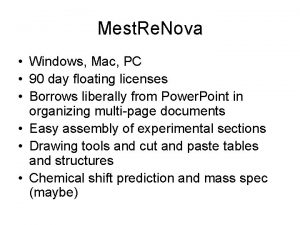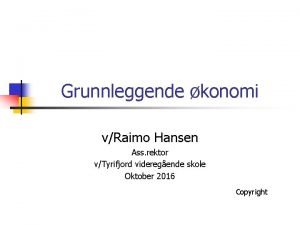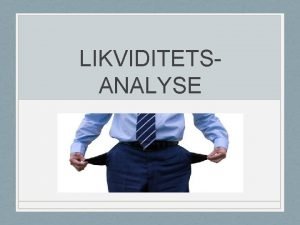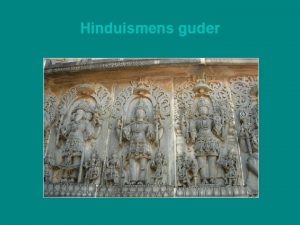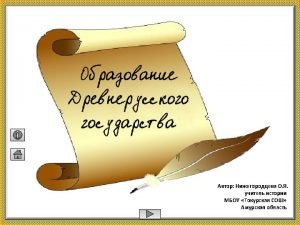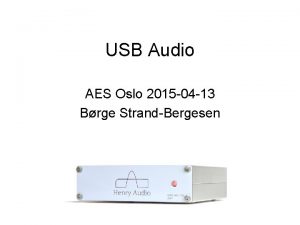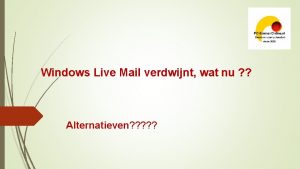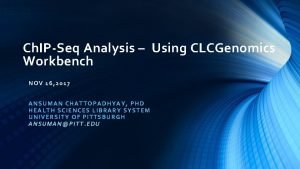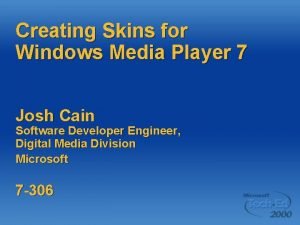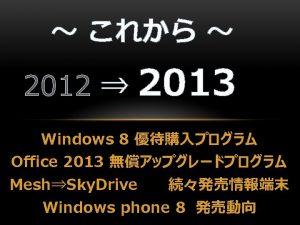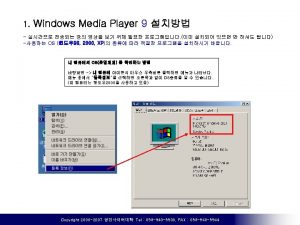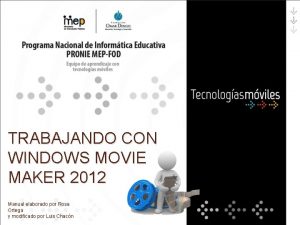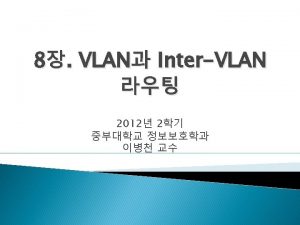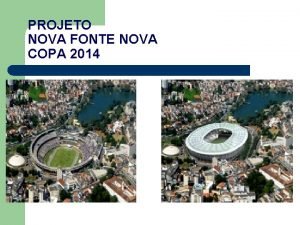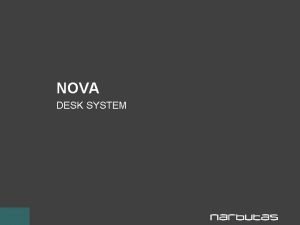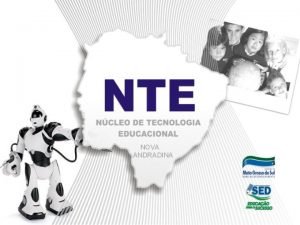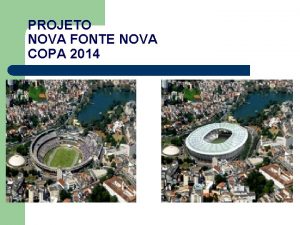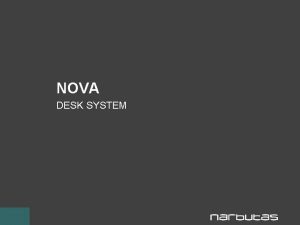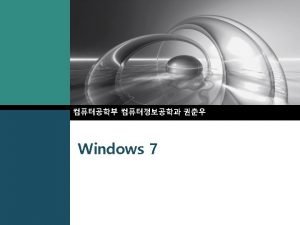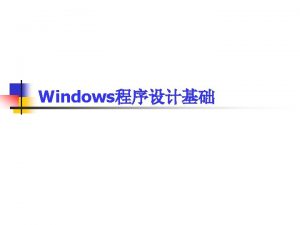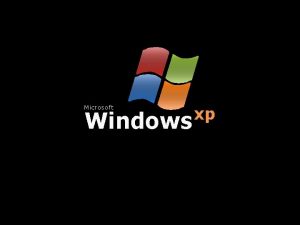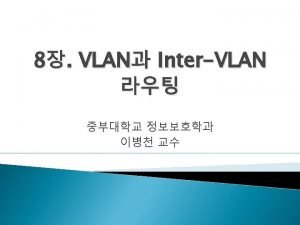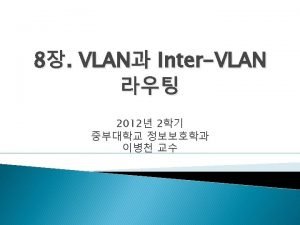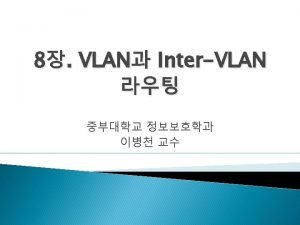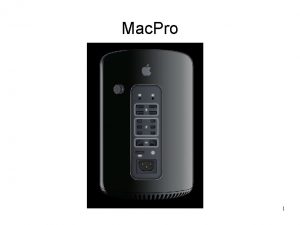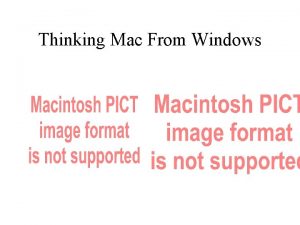Mest Re Nova Windows Mac PC 90 day




























- Slides: 28

Mest. Re. Nova • Windows, Mac, PC • 90 day floating licenses • Borrows liberally from Power. Point in organizing multi-page documents • Easy assembly of experimental sections • Drawing tools and cut and paste tables and structures • Chemical shift prediction and mass spec (maybe)

Mest. Re. Nova shift prediction • For proton and carbon 1 D, choose Analysis -> Predict & Compare to see stacked experimental and predicted spectra • For 2 D HSQC, choose Analysis -> Predict & Verify to get color coded summary of agreement between experimental and predicted shifts


A major realignment of NMR spectrometers and users • A new 500 in Malott • 400 purchased by the Chemical Methodology and Library Design (CMLD) program moving to SBC • The CMLD has moved to SBC • The Aube and Peterson research groups have moved from Malott to SBC

Two 500’s in place of one • One is configured for maximum versatility and will be open access—it will have the name paris • One has the minimum configuration to support the 13 C/1 H cryoprobe (does only C, H, D in 1 D and 2 D, temperature range 15 to 50 C) with a 60 position sample changer —it will have the name siena and have a staff-managed queue system

Capabilities of paris • All nuclei except helium, thallium, and tritium (in broadband probe) • Temperature range -100 to +150 C (in broadband probe) • Triple resonance multi-D experiments for proteins (in TXI probe) • 24 position sample changer • High resolution 1 H MAS (e. g. biological tissue, swollen polymer resins)

Which instruments do variable temperature? • Florence—up to 150, down to ~-10 with air bath • Paris and yosemite—up to 150, down to -100 with liquid nitrogen (yosemite also has an air bath)

Which instruments do 31 P? • All except siena and grandteton • The most convenient places are florence and yosemite. They have switchable QNP probes that do not have to be tuned (and retuned at the end of the experiment). Not tuning a probe when it isn’t necessary saves wear and tear, and repair, for broadband probes.

Which instruments do 19 F? • All except siena and grandteton • The most convenient instrument is florence, for the same reasons as 31 P

Which instrument is most cost effective? • For carbon, siena, by a wide margin. It costs twice as much per hour as time on a 400 but it is 30 times faster. • On any instrument, any time, you can get the fastest, cheapest results by making your solution as concentrated as possible. Use the minimum amount of solvent that you can shim (3. 5 -4 cm sample column).

Time averaging • S/N only goes up with the square root of the number of scans • The only nuclei that count are the ones inside the coil (2 cm slice) • If you cut the concentration by half, the experiment gets 4 times longer to deliver equivalent results • Volume restriction helps a lot and there a variety of ways to do it

Sample height vs. cost to time average to the same S/N for 13 C NMR 3 cm $2. 80 4 cm $5 5 cm $7. 20 6 cm $11. 25

Free “ERETIC” using the solvent signal • ERETIC (Electronic REference To access In vivo Concentrations) is a method for absolute quantitation of solution concentration by NMR (and something we can do) • The residual signal from your deuterated solvent provides a quick (and free) way to estimate solution concentration and plan realistic experiments

Example using CDCl 3 • Standard grade CDCl 3 is 99. 8% D which means there is 1. 5 mg of CHCl 3 (mw 119) in a 0. 5 ml sample • Estimate the quantity of solute taking in to account the molecular weight difference between the solute and chloroform

Top trace: 10% ethylbenzene, a. k. a. 40 mg, a. k. a. 0. 87 molar Bottom trace: 0. 1% ethylbenzene, a. k. a 400 ug, or 8. 7 m. M. CHCl 3 peak is about 10 x bigger than the solute peaks integrating for one proton. MW of ethylbenzene is 106; if the MW of your compound is 320 and your 1 H spectrum looks like the bottom one, you have about 1. 2 mg in solution. If your 1 H looks like the top one, 13 C acquisition time on the cryoprobe will be seconds; for the bottom one, 2 -3 hours.

The sample (ethylbenzene aromatic region) with manual shimming and topshim

Topshim • Topshim is faster and much more accurate than gradshim particularly for lock gradient shimming • Topshim is available on the AV consoles (grandteton, yosemite, bigsur, siena) • No point in running more than one iteration, as it will always arrive at the same shim values • If you are still using gradshim on any of these systems, switch NOW!

Gradshim • Older implementation of gradient shimming available on DRX consoles (florence and paris). • Implemented for a single pass of z 1 -z 4 taking 75 seconds. • Works better from a good starting point (rsh first). • If you don’t like the results of the first pass, additional pass(es) may improve resolution further. • Can “blow up” particularly on weird or short samples (rsh and start over).

Basis of gradshim • Gradshim does a 1 D MRI of the NMR tube. The 1 D profile of a straight tube should be a flat vertical line. In this example, 3 cycles of shimming were performed. The biggest improvement came from the first cycle.

Basis of gradshim, 2 Gradshim computes the linear combination of previously mapped shim corrections that will make the initially curved or bent field profile into a flat line when the corrections are added in. This is a shim map showing the corrections provided by the shims z 1 -z 6.

First-time gradshim setup The DISK window should say opt/topspin (no leading slash) and the USER window should have your user name in it. Otherwise, you will get many error messages. If you set these correctly the first time, the same values will appear each time you type gradshim after that.

Topshim and gradshim • Gradshim does a fixed number of cycles of shimming using an iteration control file. The images are made by subtraction of two profiles acquired independently. It is relatively slow. • Topshim uses a fast MRI technique called FLASH imaging. The topshim program is a hybrid of a pulse program and a processing/fitting macro which makes iteration fast and efficient.

When gradient shimming may fail • It is assumed that the field profile comes from a single NMR line. Solvents with multiple peaks, like methanol and toluene, have multiple overlapping profiles, and may shim less effectively. • Don’t mix deuterated solvents if you don’t have to, because that leads to multiple 2 H peaks. • DMSO-d 6 is an excellent solvent, with a single strong 2 H peak, but many people don’t like to use it because it is difficult to pump off afterwards. Add some ethanol and it will pump off MUCH faster!

An example of a well shimmed peak and a “singlet” in which all 6 z shims are misset

An example of spurious splitting (misset z 1) causing a pentet to look like a septet; also z 4 misset

Changes to queue operation on siena • The new sample changer is bigger and it has random access capability, so we can implement a priority system for faster turnaround of short experiments during the day. • Web interface • The new system shims much faster (and more reliably) so we can get significantly higher throughput for short experiments while maximizing quality

A sample of a mixture run on the old 500, then the purified sample re-run on the new one following mass directed fractionation

Priority queue system • The following experiments will get high priority (“day”) access: – Proton – Carbon 256 scans max – DEPT-135 128 scans max – COSY – HSQC 2 x 128 • Everything else will get lower (“night”) priority
 Mest re nova
Mest re nova Day 1 day 2 day 3 day 4
Day 1 day 2 day 3 day 4 Hva er omløpsmidler
Hva er omløpsmidler Likviditetsgrad 3 formel
Likviditetsgrad 3 formel Parvati hinduismen
Parvati hinduismen Topwar
Topwar Mac bethad mac findláich
Mac bethad mac findláich Mac mac o kok dac
Mac mac o kok dac Day 1 day 2 day 817
Day 1 day 2 day 817 Mac vs windows 7
Mac vs windows 7 Windows live mail xp
Windows live mail xp Windws update
Windws update Ipseq
Ipseq Windows driver kit windows 7
Windows driver kit windows 7 Install windows xp virtual machine
Install windows xp virtual machine Live movie maker
Live movie maker Windows xp
Windows xp Windows media skins
Windows media skins Windows movie maker download microsoft
Windows movie maker download microsoft Nokia lumia 920 windows 10
Nokia lumia 920 windows 10 Windows media player 9
Windows media player 9 Windows identity foundation windows 10
Windows identity foundation windows 10 Windows movie maker 2012 download
Windows movie maker 2012 download Rising he justified freely forever
Rising he justified freely forever Oceans apart day after day
Oceans apart day after day Romeo and juliet day timeline
Romeo and juliet day timeline Conclusion of seed germination
Conclusion of seed germination Day one day one noodle ss2
Day one day one noodle ss2 Day to day maintenance
Day to day maintenance
